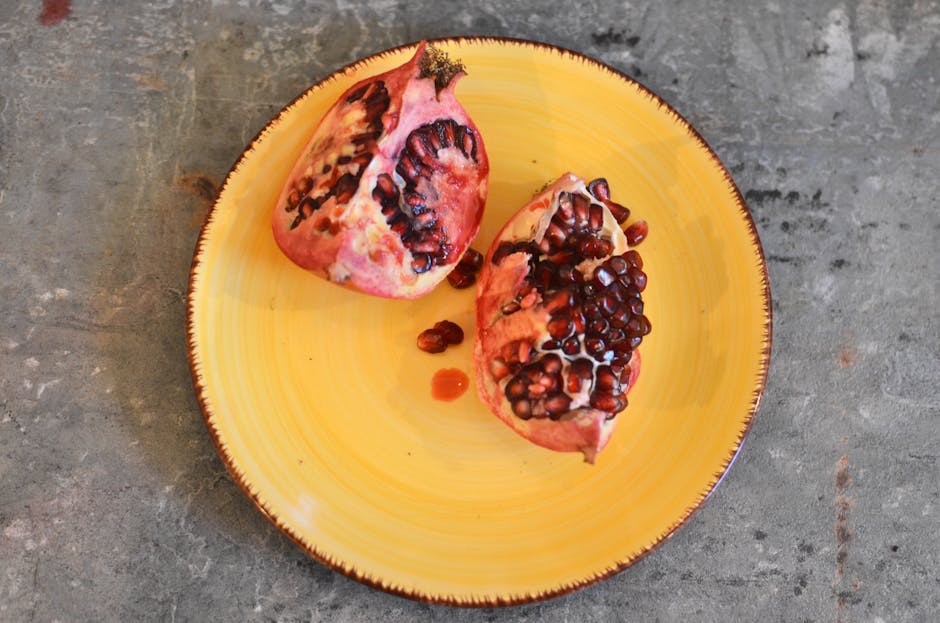Journey with us into the vibrant world of pomegranate juice, a beverage steeped in history and bursting with flavor. Its origins trace back thousands of years to the fertile crescent region of the Middle East, where the pomegranate fruit itself is believed to have first been cultivated. Ancient texts from Persia, Greece, and Rome all mention the pomegranate, highlighting its importance not only as a food source but also as a symbol of fertility, abundance, and even immortality in various mythologies. Archaeological evidence suggests pomegranate cultivation dates back as far as 4,000 years ago, showcasing its enduring appeal across cultures and millennia.
The pomegranate’s journey beyond its birthplace is a testament to its desirability. It spread along ancient trade routes, eventually reaching regions across the globe. Its deep red juice, packed with antioxidants and bursting with a uniquely tart-sweet flavor profile, has captivated palates for centuries. Today, Iran, India, and Turkey are among the world’s top pomegranate producers, contributing significantly to the global market. But the fruit and its juice are consumed and celebrated across continents, each region adding its own unique culinary twist – from being incorporated into savory dishes to gracing festive occasions.
Pomegranate juice isn’t just a delicious drink; it boasts a significant nutritional profile. A single cup can provide a substantial amount of Vitamin C, potassium, and fiber. Furthermore, it’s rich in polyphenols, powerful antioxidants associated with numerous health benefits. Studies have suggested that regular consumption of pomegranate juice may contribute to improved cardiovascular health, reduced inflammation, and even potential cancer-fighting properties. Although more research is needed to confirm these benefits fully, the evidence is promising, adding another layer to the pomegranate’s appeal that extends beyond its captivating taste.
Beyond its nutritional value, the pomegranate and its juice hold a special place in various cultures. In some regions, it’s a staple during religious festivals and celebrations, symbolizing prosperity and good fortune. Its vibrant color is often associated with passion and vitality, making it a popular ingredient in traditional medicine and beauty treatments. From ancient mythology to modern health trends, the pomegranate’s journey has been one of enduring significance, solidifying its place as a truly remarkable fruit and a delightfully refreshing juice.
Ingredients and Measurements
Crafting truly delicious pomegranate juice requires careful attention to both ingredient quality and precise measurements. The following recipe yields approximately 1 liter (4 cups) of fresh, vibrant pomegranate juice. Adjust quantities proportionally for larger or smaller batches.
Pomegranates: This is, of course, the star ingredient! You’ll need approximately 1.5 kilograms (3.3 pounds) of ripe, juicy pomegranates. Choosing the right pomegranates is crucial. Look for fruits that are heavy for their size, with a deep red or crimson color and smooth, firm skin. Avoid pomegranates with bruises, soft spots, or mold. The arils (the individual seeds) should be plump and juicy, not dry or shriveled.
Water (Optional): Depending on your desired consistency and the juiciness of your pomegranates, you may want to add water. Start with 100 milliliters (approximately ½ cup) of filtered or bottled water. Avoid using tap water, as the chlorine and minerals can affect the taste and quality of the juice. Add more water, if needed, to achieve your preferred consistency, but remember that adding too much water will dilute the flavor.
Lemon Juice (Optional): A small amount of fresh lemon juice can enhance the flavor and act as a natural preservative. Use approximately 15 milliliters (1 tablespoon) of freshly squeezed lemon juice. Don’t overdo it! Too much lemon juice will overpower the delicate pomegranate flavor. If you prefer a sweeter juice, you can omit this ingredient altogether.
Sugar (Optional): The sweetness of pomegranates can vary depending on the variety and ripeness. If your pomegranates are not very sweet, you may want to add sugar to taste. Start with 50 grams (approximately ¼ cup) of granulated sugar or honey. Add sugar gradually, tasting as you go, until you reach your desired level of sweetness. Remember that excessive sugar can mask the natural flavor of the pomegranate.
Ice (Optional): If you prefer your pomegranate juice chilled, add ice cubes to your blender or food processor before juicing. This will help to create a smoother, colder juice. If adding ice, reduce the amount of water to account for the added liquid from melting ice.
Important Note: These measurements are guidelines. The actual amount of juice you extract will depend on the size and juiciness of your pomegranates. It’s always a good idea to taste-test your juice throughout the process and adjust the ingredients to your liking. Enjoy the process of creating your own delicious pomegranate juice!
Equipment List
Producing delicious pomegranate juice requires the right tools to ensure efficiency and a high-quality final product. This equipment list outlines the necessary items, ranging from essential kitchen staples to potentially beneficial specialized equipment depending on your production scale.
For all production scales (home to small-batch commercial):
- Sharp Knives (2): One paring knife (around 3-4 inches) for detailed work like removing the pomegranate arils, and one chef’s knife (8-10 inches) for efficient cutting of the pomegranates in half. High-quality, stainless steel knives are recommended for their durability and ease of cleaning. Dull knives are dangerous and inefficient.
- Cutting Board (Large): Choose a large, sturdy cutting board made of plastic or wood (wood is preferable for its gentler effect on knife blades). A minimum size of 12×18 inches is suggested to accommodate the pomegranates comfortably. Always use separate cutting boards for fruits and vegetables to prevent cross-contamination.
- Large Mixing Bowls (2): At least two large mixing bowls, preferably stainless steel or glass. One will be used to collect the arils and the other to hold the juice later. Aim for bowls with a capacity of at least 6 quarts each to manage larger quantities of pomegranates efficiently.
- Fine-Mesh Sieve or Strainer: Essential for removing seeds and pulp from the juice for a smoother texture. A fine-mesh sieve allows for more thorough straining than a standard colander. Consider having two to speed up the process.
- Juicer (Citrus or Centrifugal): A citrus juicer can be used for smaller quantities, but for larger batches, a centrifugal juicer is more efficient. Ensure your chosen juicer has a large enough capacity to handle the amount of arils you’ll be processing. A high-quality juicer that can handle pulp is recommended for maximum juice extraction.
- Measuring Cups and Spoons: Accurate measurements are crucial for consistent results. Having a set of both metric and imperial measuring cups and spoons will allow for flexibility in following different recipes.
- Large Storage Containers: Airtight containers, preferably glass or food-grade plastic, are needed to store the finished pomegranate juice. Size will depend on the amount of juice produced.
For larger-scale commercial production (optional):
- Commercial Juicer: A large-capacity commercial juicer will significantly increase efficiency. These are usually more powerful and can process larger quantities of pomegranates in less time. Research different models based on your expected production volume.
- Food Processor with a Juice Extraction Attachment: Some food processors offer juice extraction attachments, providing a more versatile option than a dedicated juicer.
- Pasteurizer (for extended shelf life): For commercial applications, a pasteurizer is necessary to extend the shelf life of the juice and ensure safety. Consult food safety regulations in your area.
- Bottling and Sealing Equipment: If bottling and selling your juice, you’ll need appropriate bottles, a bottle filler, and a sealing machine to ensure product integrity and safety.
Cleaning Supplies: Regardless of the scale, always prioritize hygiene. Keep plenty of clean cloths, sponges, and a suitable detergent for cleaning all equipment thoroughly after each use. Proper cleaning is crucial to prevent bacterial contamination.
Preparation of Pomegranates
Preparing pomegranates for juicing might seem daunting, but with the right technique, it becomes surprisingly easy and efficient. The key is to minimize the mess and maximize the yield of juicy arils (the individual pomegranate seeds).
First, select ripe pomegranates. Look for firm, heavy fruits with a deep red or purplish-red color. Avoid any that are soft, bruised, or have blemishes. A good pomegranate will feel substantial in your hand.
Next, you’ll need to cut the pomegranate open. There are two primary methods: scoring and submerging. The scoring method involves cutting the pomegranate in half or into quarters. To do this, carefully cut through the pomegranate skin, following the natural segments. Don’t cut too deep, or you’ll risk damaging the arils. A sharp knife is essential for a clean cut. This method is best for smaller pomegranates or if you’re comfortable with a slightly messier process.
The submersion method is generally considered less messy and more efficient for larger pomegranates. Fill a large bowl with cold water. Cut the pomegranate in half, then gently submerge each half in the water. Using your fingers or a spoon, carefully loosen the arils from the membrane, allowing them to sink to the bottom of the bowl. The white pith and membrane will float to the surface. This allows for easy removal of the unwanted parts, leaving you with mostly clean arils.
Regardless of the method you choose, once you’ve separated the arils from the membrane, you may find some remaining pith clinging to the arils. This is easily removed by gently rinsing the arils under cold water in a fine-mesh sieve. This step helps to ensure a cleaner, smoother juice with less pulp.
For a typical batch of pomegranate juice (approximately 1 liter), you’ll need around 4-5 medium-sized pomegranates. The exact quantity will depend on the size and juiciness of your fruit. It’s always best to have a little extra on hand, just in case.
Important Note: Pomegranate juice stains easily. Wear clothing you don’t mind staining, and work in an area that’s easy to clean. If you do get juice on your skin or clothing, act quickly to prevent permanent staining. Cold water and a little bit of dish soap can usually remove fresh stains.
Once you have your arils separated and cleaned, you’re ready to move on to juicing! Whether you use a juicer, blender, or a simple food mill, you’ll now have the perfectly prepared pomegranates ready to transform into delicious, refreshing juice.
Following these steps will ensure a smoother, more efficient pomegranate preparation process, leading to a higher yield of delicious juice.
Juicing Method (e.g., hand juicing, blender, juicer)
Extracting the juice from pomegranates can be surprisingly labor-intensive, but the resulting juice is well worth the effort. You have several options for juicing, each with its own pros and cons. Let’s explore the most common methods: hand juicing, using a blender, and employing a dedicated juicer.
Hand Juicing: The Traditional Approach
This method is the most time-consuming but arguably produces the purest juice, free from added pulp or foam. Start by cutting the pomegranate in half. Then, using a spoon, carefully loosen the arils (the individual seeds containing the juice) from the membrane. This step requires patience and a light touch to avoid crushing the seeds excessively. Once you have a bowl full of arils (approximately 1-2 cups, depending on the size of your pomegranates), you can begin juicing. Simply roll each aril gently between your thumb and forefinger, pressing to release the juice into a bowl. Strain the juice through a fine-mesh sieve or cheesecloth to remove any seeds or membrane fragments. This method yields approximately 1/2 to 3/4 cup of juice per cup of arils.
Blender Method: Quick and Easy, but with Trade-offs
Using a blender offers a faster approach. Again, start by removing the arils from the pomegranate halves. Add the arils to your blender, along with 2-4 tablespoons of water (depending on the desired consistency). Blend on high speed for approximately 30-60 seconds, until the arils are completely broken down. The resulting mixture will be a thicker juice with more pulp. Strain the mixture through a fine-mesh sieve or cheesecloth to remove the pulp for a smoother juice, if desired. This method is quicker than hand juicing, but some of the juice might be lost in the pulp. You can expect a similar yield to hand juicing, but with a higher percentage of pulp remaining.
Juicer Method: Efficient and Pulp-Controlled
A citrus juicer or a centrifugal juicer (the kind with a spinning basket) is the most efficient method, especially if you’re juicing a large quantity of pomegranates. However, these methods often leave a significant amount of juice trapped within the pulp. For best results with a juicer, it’s crucial to cut the pomegranate into smaller pieces to ensure maximum juice extraction. Simply feed the pieces into the juicer according to the manufacturer’s instructions. This method is the fastest, but you may need to adjust the pulp level by running the juice through a sieve if you prefer a less pulpy drink. The yield is comparable to the other methods, but the process is significantly faster.
Professional Recommendation: Regardless of the method you choose, always use fresh, ripe pomegranates for the best flavor and juice yield. Store your freshly squeezed pomegranate juice in an airtight container in the refrigerator for up to 3 days. Freezing the juice in ice cube trays is also a great way to preserve it for longer periods.
Straining and Filtering (if applicable)
While not strictly necessary for a rustic, pulpy pomegranate juice, straining and filtering significantly impact the final texture and clarity of your juice. The decision to strain or filter depends entirely on your preference. If you enjoy a thicker, more textured juice with visible pomegranate seeds, you can skip this step entirely. However, for a smoother, clearer juice, straining and/or filtering are recommended.
Method 1: Simple Straining for a Slightly Smoother Juice
This method removes larger seeds and pulp pieces, leaving a slightly smoother consistency while still retaining some texture. You’ll need a fine-mesh sieve (about 1/8-inch mesh) placed over a large bowl. Gently pour your freshly juiced pomegranate mixture through the sieve. Use a spatula or spoon to press the solids against the sieve to extract as much juice as possible. Avoid pressing too forcefully, as this can lead to bitterness from the seeds and pith.
Expected Yield: You should retain approximately 90-95% of your initial juice volume using this method. The remaining 5-10% will be composed of seeds and pulp.
Method 2: Double Straining for Maximum Clarity
For a truly clear juice, a double straining process is recommended. First, use a fine-mesh sieve as described above. Then, for the second straining, use a cheesecloth or a nut milk bag. Line a fine-mesh sieve with the cheesecloth or bag, ensuring it’s securely fastened. Pour the already strained juice through this second layer. This step effectively removes the very fine particles, resulting in a brilliantly clear juice. This process is more time-consuming, but yields a superior clarity.
Expected Yield: You may experience a slightly lower yield with this method (around 85-90% of the initial volume), but the clarity will be significantly improved.
Method 3: Filtering for an Ultra-Clear Juice (Optional)
For the ultimate in clarity, you can use a fine-mesh filter, such as a coffee filter or a dedicated juice filter. This method is best suited for smaller batches and requires more patience. Place the filter over a bowl or container and slowly pour the strained juice through. This removes even the tiniest particles, resulting in a beautifully clear juice, similar to commercially produced pomegranate juice.
Expected Yield: The yield is typically slightly lower than double straining, around 80-85% of the initial volume. However, the resulting juice will be exceptionally clear and free of any visible particles.
Professional Recommendations:
Regardless of the method you choose, work in batches to prevent overflowing and ensure efficient straining or filtering. Clean your equipment thoroughly between batches to prevent cross-contamination. If you are storing the juice, ensure it’s properly sealed and refrigerated to maintain freshness and prevent spoilage. Always taste your juice at each stage to ensure it meets your desired level of sweetness and tartness. Adjust accordingly before bottling or serving.
Sweetening and Flavoring (optional)
While the natural sweetness of ripe pomegranates often provides sufficient sweetness for delicious pomegranate juice, you may wish to adjust the flavor profile to your preference. This section details optional methods for sweetening and flavoring your homemade juice, ensuring a perfectly balanced drink.
Sweetening: The best sweetener to use depends on your dietary preferences and the intended use of the juice. Avoid overly sweetening the juice, as it can mask the delicate pomegranate flavor. A little sweetness goes a long way.
For a natural sweetness, consider honey or maple syrup. Honey offers a complex, floral sweetness that complements the tartness of the pomegranate. Start with 1-2 tablespoons of honey per cup of juice and adjust to taste. Maple syrup, particularly a high-quality grade, provides a subtle caramel note that pairs well with pomegranate’s acidity. Use the same starting quantity as honey – 1-2 tablespoons per cup – and adjust accordingly.
Agave nectar is another popular choice, offering a mild sweetness and a slightly thinner consistency than honey or maple syrup. However, be mindful of its high fructose content. Use it sparingly, beginning with 1-2 tablespoons per cup of juice and tasting before adding more.
If you prefer a more refined sweetness, granulated sugar or powdered sugar can be used. Start with 1-2 tablespoons of granulated sugar per cup and stir until fully dissolved. Powdered sugar dissolves more easily but can result in a slightly cloudier juice. Remember to dissolve the sugar completely to avoid a gritty texture.
Flavoring: Enhancing the natural flavors of pomegranate juice with complementary ingredients can elevate the drinking experience. A few drops of vanilla extract can add a subtle warmth and complexity. Start with ½ teaspoon per cup and taste, adding more if needed. Avoid overpowering the pomegranate’s unique flavor.
For a citrusy twist, a squeeze of fresh lime or lemon juice can brighten the juice and add a refreshing zing. Start with the juice of ½ a lime or lemon per cup and adjust to your preferred level of tartness. Use fresh citrus juice for the best flavor, avoiding bottled juices that may contain preservatives or added sugars.
Spices such as cardamom or cinnamon can also be incorporated for a more exotic flavor profile. A pinch of ground cardamom or a small cinnamon stick steeped in the juice for a few minutes can add warmth and depth. Experiment with small quantities to avoid overwhelming the pomegranate flavor. Remember to remove the cinnamon stick before serving.
Important Note: Always taste your juice as you add sweeteners and flavorings. Adjust the quantities to your personal preference. It’s better to start with a small amount and add more gradually than to overdo it and ruin the delicate balance of flavors.
Professional Recommendation: Before adding any sweeteners or flavorings, thoroughly chill the pomegranate juice. Cold juice allows for better flavor integration and enhances the overall taste experience. Store any sweetened or flavored juice in airtight containers in the refrigerator for up to 5 days.
Delicious Pomegranate Juice: Recommendations
Delicious Pomegranate Juice is a vibrant and healthy beverage bursting with flavor and packed with nutrients. To ensure you get the most out of this delicious juice, we offer the following recommendations:
Serving Suggestions: Enjoy our pomegranate juice straight from the bottle, chilled for a refreshing treat. Its tartness makes it an excellent addition to cocktails, adding a unique depth and beautiful color. Try it as a mixer with vodka or gin for a sophisticated adult beverage. For a non-alcoholic option, mix it with sparkling water or club soda for a light and bubbly drink. A splash of pomegranate juice can also elevate the flavor of your favorite iced tea or lemonade. Consider using it as a marinade for chicken or fish, adding a touch of sweetness and acidity to your dishes.
Complementary Dishes: The intense flavor of pomegranate juice pairs beautifully with a variety of dishes. Its tartness cuts through richness, making it a perfect accompaniment to fatty meats like lamb or pork. It’s also a delightful complement to Mediterranean-inspired cuisine, pairing well with dishes featuring feta cheese, olives, and herbs. Its bright acidity enhances the flavors of salads, especially those with nuts, seeds, and fresh greens. Consider drizzling it over grilled halloumi cheese or adding it to a vibrant grain bowl with roasted vegetables. The juice also works wonders in desserts, adding a sophisticated twist to panna cotta or yogurt parfaits.
Storage Conditions: For optimal freshness and flavor, refrigerate your Delicious Pomegranate Juice after opening. Once opened, it should be consumed within 7-10 days. Unopened bottles should be stored in a cool, dark place, away from direct sunlight. Do not freeze the juice, as this can affect its texture and flavor.
Nutritional Information (per 8oz serving): Please note that nutritional information may vary slightly depending on the batch. Our Delicious Pomegranate Juice is a naturally low-fat, low-sodium beverage. Approximate values include: Calories: 120-140; Total Fat: 0g; Saturated Fat: 0g; Cholesterol: 0mg; Sodium: 5-10mg; Total Carbohydrate: 30-35g; Dietary Fiber: 1-2g; Sugars: 25-30g; Protein: 1-2g; Vitamin C: 20-30% of daily value. This juice is a good source of antioxidants and Vitamin C.
Important Note: While pomegranate juice is generally safe for consumption, individuals with certain allergies or health conditions should consult their doctor before incorporating it into their diet. Always check the label for any potential allergens.
We hope you enjoy Delicious Pomegranate Juice! We encourage you to experiment with different serving suggestions and discover your favorite way to savor its unique and refreshing taste.





